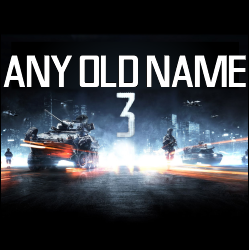That’s not relevant to being a tankie as the US, Israel, and other states backing Israel, aren’t claiming they’re building communism or are the successor state to another which claimed to be building communism. It’s the part where communism is an excuse that means the bad things didn’t really happen and would be fine even if they did that makes tankie-ism its own distinct thing.
AnyOldName3
- 0 Posts
- 7 Comments

 2·12 days ago
2·12 days agoI’ve definitely noticed less shininess than the same filament was getting at the same temperatures on my previous printer, except for the first layer. As the first layer prints without part cooling, my guess is that the extra part cooling versus the other printer means it’s setting before it’s had time to self-level. If that’s right, then turning down the part cooling (and then also the speed so you can get away with the reduced part cooling) would make things shiny again. I’ve not bothered investigating that, as most of what I print is either functional, where I wouldn’t care about shininess, or gets painted, where any shininess would come from paint or clearcoat.

 4·13 days ago
4·13 days agoI ran the printer’s pre-sliced 12-minute benchy with cheap Geeetech PLA filament, and it didn’t come out great, but then realised that when I’d removed the nozzle clog that was there from the factory (apparently they test some nozzles during QA, so mine had some dregs of filament with a lump that needed a cold pull to shift it) I’d accidentally plugged one of the part cooling fans into the wrong header and it wasn’t running. After fixing that, it came out much better than what you’ve got here, despite a pause part way through due to trying to do it with the tail end of a roll.
I’ve read that the throat cooling isn’t great for PETG as the fan as it draws warm air from inside the toolhead shroud, and there’s an alternative one on printables that avoids this problem (although a duct to isolate the fan and its cutout in the shroud from the rest of the shroud interior might be simpler), so that could be related as you’re running PETG.

 112·9 months ago
112·9 months agoThere’s a good argument that Nvidia only had the money to do the work because of anticompetitive practices, and so shouldn’t be allowed to benefit from it unless everyone’s allowed to benefit from it, otherwise it’s just cementing their dominant position further.

 4·10 months ago
4·10 months agoThe legalese in the US (which might as well be everywhere as you need to have compatible copyright with the US to have a trade deal with the US, and your country is in trouble if it doesn’t have a trade deal with the US) is basically that:
- If you buy a physical copy, you’ve become the owner of that one copy of the IP contained within. As the owner of that copy, you can do stuff with it like read it, display it, destroy it, or sell it on to someone else thanks to the First Sale Doctrine (but you can’t do other things like copying it, unless it’s a DVD as there’s a specific exemption for the copy your DVD has to make to RAM in order to decode the DVD). There’s nothing the copyright holder of the original can do to stop you exercising these rights.
- If you buy a digital ‘copy’, you’ve not bought a copy, you’ve bought a licence to use one of the publisher’s copies that they’ve given you permission to have on your device(s). They’ll also have given you permission to do things like read it if it’s an ebook or play it if it’s a video game, but as it’s their copy, not yours, you don’t automatically get rights to do anything they’ve not explicitly permitted you to, and it’s not in their interests to permit you to sell it on unless they think you’ll pay enough more for a resaleable copy that it covers a potential future lost sale.
I’m sure plenty of publishers would love for the second set of rules to apply to things like books, and from a quick googling, it seems like occasionally academic textbooks have included a licence agreement instead of you actually owning the physical book, but I imagine that most publishers are concerned about bad PR from attempting this with a hit novel and also don’t want to be accused of fraud for having their not-a-book-just-a-licence on the shelf next to regular books and thereby tricking consumers into thinking they were buying a regular book. EA attempted to double-dip over a decade ago with Battlefield 3, which included a copy of the game (with regular First Sale Doctrine rights) and a licence key for the online pass (which wasn’t transferrable) and got bad press because of it. Newer PC games often come as a key in a box with no disk or a disk that only runs a web installer, so you’ve not got a copy of the game to claim you’ve bought and obviously only have a licence, and this seems to have caused less upset. This wouldn’t work with a book, though, as you have to fill in the pages at the printing factory, and can’t magically do it only after the user’s got it home.

 16·11 months ago
16·11 months agoEpic donated hundreds of thousands of dollars to Godot when Unity was being dumb this summer, so either they think an open-source project is on the brink of making their competitor unprofitable and collapse, and think enough of the studios jumping ship will come to Unreal to cover that sum, or they’re concerned that someone will start enforcing antitrust laws and want something to point at to say they’re not a monopoly.

Of course not, but it’s an unrelated not fine to whether or not someone’s a tankie.